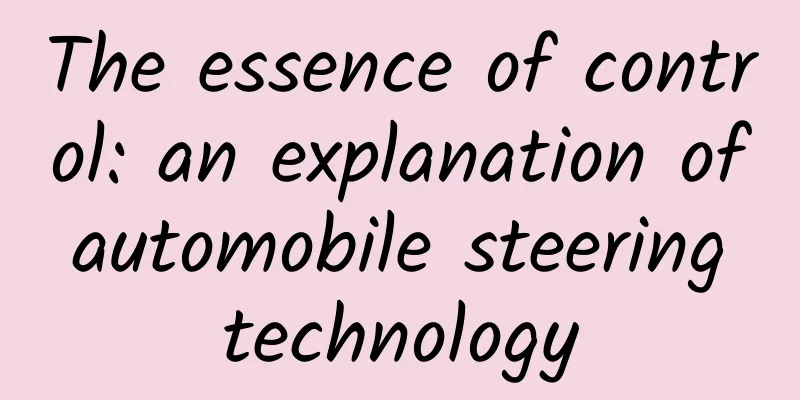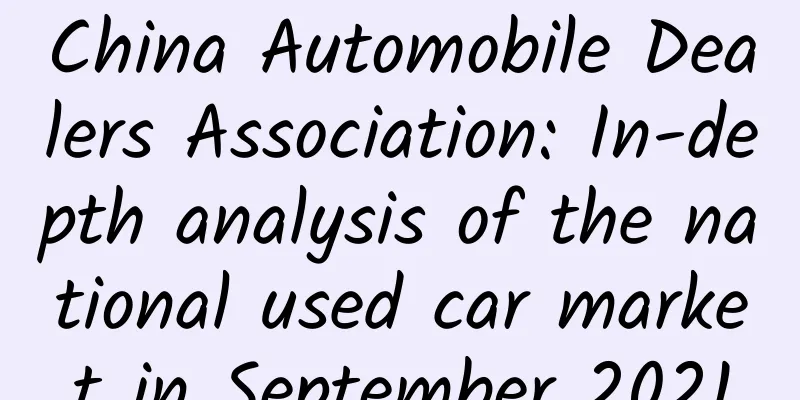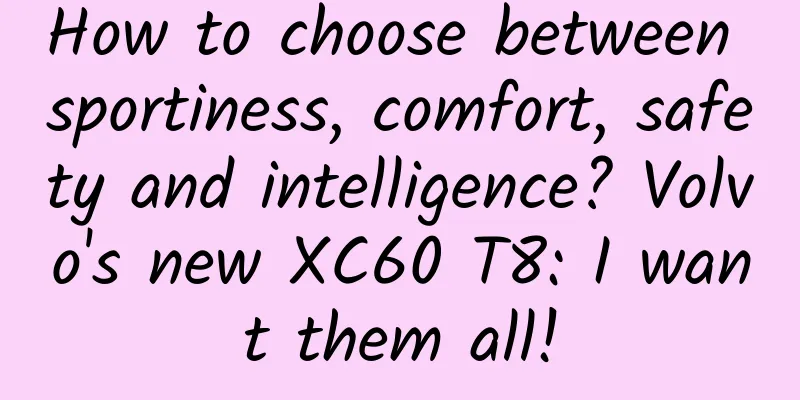The essence of control: an explanation of automobile steering technology

|
To judge whether a car is easy to drive, in addition to the coordination of the "accelerator" and "brake", the steering system accounts for half of the score. The so-called car handling mainly depends on whether the steering wheel has reached the level of "man-car unity". From the steering wheel to the front wheels, the steering process requires a set of systematic translation and transmission. In this article, we will interpret the steering system of a car to explore why this type of technology can have such a great impact on the driving feel of a car and even directly determine the attributes of a brand. To understand steering, you must first understand a basic common sense, that is, power steering. The reaction speed, accuracy and strength of the steering system are directly related to the power steering system. It is not difficult to understand that due to the huge friction between the two front tires and the ground, it will be very tiring for the human arm to overcome this force to complete the steering, which will affect the driving experience and is not conducive to the handling of safety situations such as emergency avoidance. Therefore, the existence of power steering is very necessary. Generally speaking, the energy source of power steering is the engine belt. According to the specific implementation form, power steering is divided into hydraulic power steering and electric power steering. Further subdivided, hydraulic power steering is divided into mechanical hydraulic power steering and electric hydraulic power steering; while electric power steering means that the pulling and power source of the steering rod are all performed by the motor, without the application of hydraulic principles. Electric hydraulic power steering is an upgraded version of mechanical hydraulic power steering. It makes the power steering stronger, the steering wheel lighter, and the power steering strength can be adjusted. However, compared with electric power steering, electric hydraulic power steering still relies on the hydraulic principle to achieve energy transfer. Electric power steering abandons the hydraulic principle and directly uses the motor to pull the steering and provide power steering. Compared with the former, electric power steering is more precise and does not have the same error as hydraulic power steering. At the same time, since the entire steering system is electronic and digital, the adjustment of steering force is also more precise. In winter and summer, the flexibility, response speed and accuracy of the steering system will not be affected by the physical properties of hydraulic oil. This is the power steering. The steering rod mechanism from the steering wheel to the front wheels also requires a steering shaft. This part is responsible for conveying the direction and force to the rod and the power steering mechanism. The difference in handling between various car brands lies mainly in the "translation" of the steering wheel to the steering. When it comes to handling, everyone speaks highly of BMW. In fact, among all the models I have tested, BMW's steering system has the most "integration of man and car" feeling. In other words, BMW's steering has always been tuned very "cunning", sensitive to the rotation of the steering wheel, and with less clearance. In addition, with the assistance of electric power steering, the steering wheel controls the front wheels very accurately and quickly. In addition, due to the insistence on rear-wheel drive, the front and rear weight distribution ratio of BMW models is generally 50:50. This makes the body have good follow-up performance. This is why people talk about BMW's handling with great relish. To be honest, if we only talk about the "accelerator" and "brake" perspectives, I personally think that Volvo is better than BMW. In the short term, there seems to be no major improvement in power steering. So car companies have turned their attention to the steering axis. The most prominent change in this regard is drive by wire. Infiniti Q50 is the first model to apply this technology to mass-produced cars. The steer-by-wire system eliminates the mechanical connection between the steering wheel and the front wheel steering mechanism and replaces it with a digital steering system. Let's take the Q50's DAS steering system as an example to understand the principle of steer-by-wire. As can be seen from the picture above, the Q50 still retains the traditional mechanical steering assembly, but there is a clutch (silver column) in the middle. The function of this component is that when the wire control steering fails, the mechanical steering can be connected to ensure that the steering system is still available. The three silver boxes on the left are three ECUs (electronic control units) that process steering signals. Each ECU can "translate" the steering wheel's instructions individually. Connected to the lower end of the ECU are three motors that perform steering tasks. Two of the motors are responsible for steering, and the third is responsible for simulating road feel. In the driving experience, the DAS system of Q50 is very accurate in directionality and the simulation of road feel is also very accurate. If there is no special statement, driving is not much different from an ordinary mechanical steering car. However, when you turn on the adaptive cruise control and lane keeping system, when driving on a road with a certain curvature, the front wheels will turn at a small angle, but the steering wheel will remain motionless. Steer-by-wire is a major technological upgrade based on electric power steering, and its significance is equivalent to the technological iteration from analog signals to digital signals. The advent of DAS also means that this military technology used in fighter jets has been officially transplanted to civilian vehicles. In addition to steering, the wire control technology can also be applied to other transmission devices of the vehicle, such as the drive shaft of rear-wheel drive and four-wheel drive vehicles. The sensor detects the torque distribution of the front axle, and the on-board computer determines how much torque to distribute to the rear axle, and then the ECU is responsible for notifying the motor of the rear axle to complete the torque distribution. In this way, there will be no high bulge in the middle of the rear seat. As a winner of Toutiao's Qingyun Plan and Baijiahao's Bai+ Plan, the 2019 Baidu Digital Author of the Year, the Baijiahao's Most Popular Author in the Technology Field, the 2019 Sogou Technology and Culture Author, and the 2021 Baijiahao Quarterly Influential Creator, he has won many awards, including the 2013 Sohu Best Industry Media Person, the 2015 China New Media Entrepreneurship Competition Beijing Third Place, the 2015 Guangmang Experience Award, the 2015 China New Media Entrepreneurship Competition Finals Third Place, and the 2018 Baidu Dynamic Annual Powerful Celebrity. |
<<: Samsung's mobile chief may lose his job as the Note 7 scandal continues
>>: Tesla launches survey in Germany to prove users fully understand Autopilot
Recommend
Radio signals in a storm: riding the wave or hanging by a thread?
With thunder and lightning, howling winds, and po...
[Valuable Experience] Android Performance Optimization: Memory Optimization Practice
1. Memory Leak Memory leak: For Java, a newly cre...
This generation of young people is using "hugging trees" to solve internal friction
Friends, have you ever heard of "tree huggin...
Explain the strategic concepts in detail from the three aspects of marketing, branding and communication
Strategy is a term often heard in the advertising...
On-end operations of B-end APP products: resource positions, PUSH
As far as the product operation position of B-sid...
[Smart Farmers] From "imported goods" to a treasure trove of calcium and iron, a picture to understand the magical journey of kelp
[Smart Farmers] From "imported goods" t...
App download volume is too low? You should collect product issues
How to discover product problems from users and i...
Volvo uses Microsoft's holographic glasses to see the invisible
According to foreign media reports, Volvo has cre...
my country has discovered a new COVID-19 drug and obtained a patent! It is extracted from this plant! Many people have seen it, but they can't name it.
Expert of this article: Li Ting, Master of Plant ...
User operation: 8 tricks for user portrait model!
User portraits are a way of describing and depict...
Giants are accelerating their layout in Southeast Asia, becoming the next battlefield for Chinese technology companies
In recent years, a wave of Chinese investment has ...
9 major processes of Tik Tok live streaming, a must-have operating guide for beginners!
In our previous articles, we have shared many met...
618 is coming, analysis of 5 different cross-border e-commerce operation models
This article analyzes different cross-border e-co...
How to turn off the WeChat mini program function? How to log out of WeChat Mini Program?
How to turn off the WeChat mini program function?...









